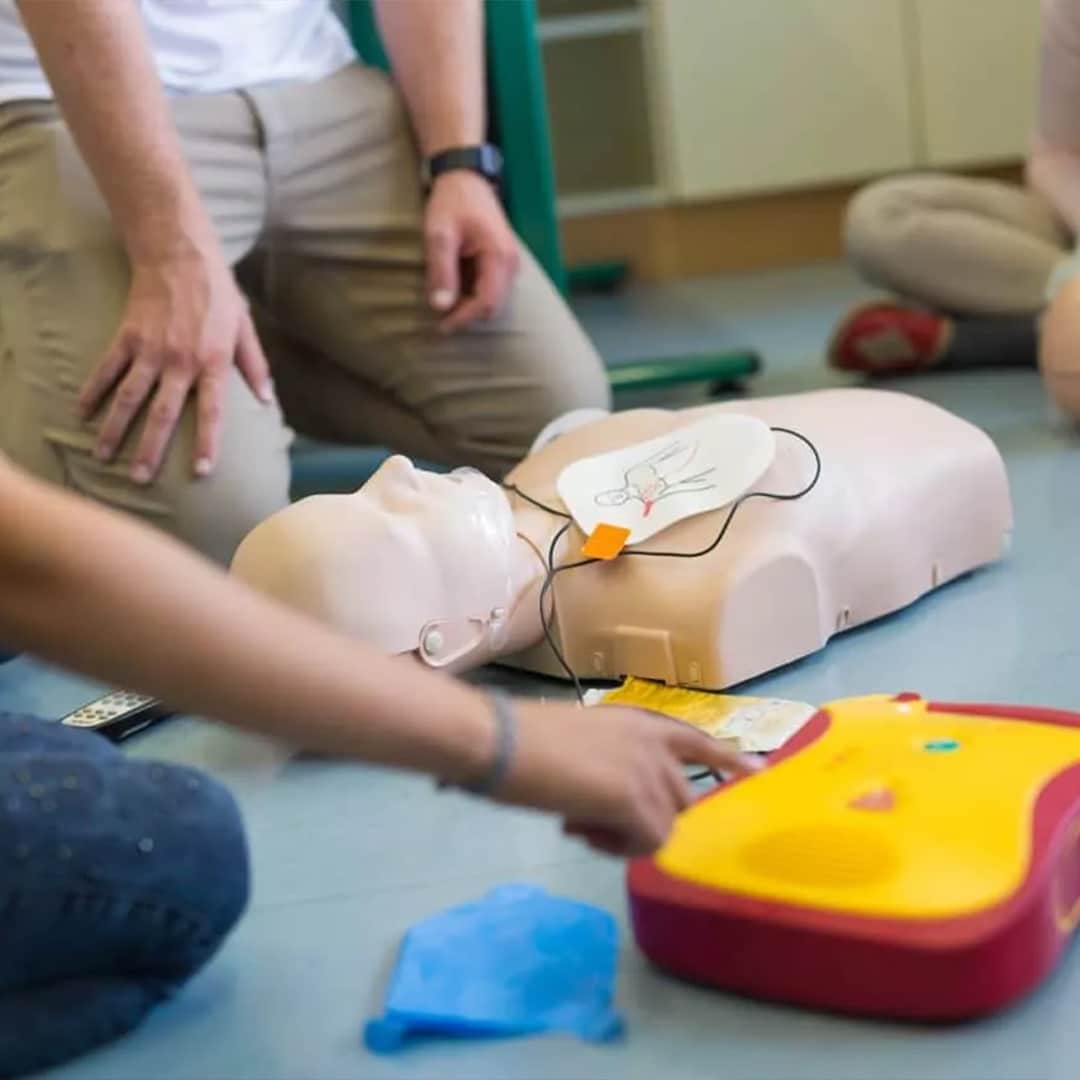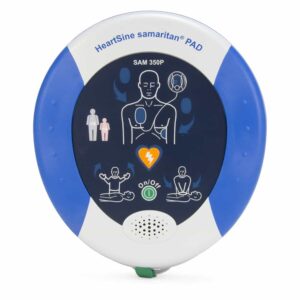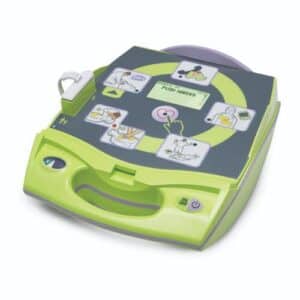AEDs: What to Consider When Purchasing!
Purchasing an Automated External Defibrillator for your office, warehouse, church, home, or facility can be intimidating, and for most buyers it’s uncharted territory. Between different Brands and Models (roughly 30 different AEDs), you may be trying to discern the differences between these Medical Devices, and which one would best suit your situation and facility. Most individuals have no formal education or experience using these AED’s which can create issues down the road if you purchase the wrong one, but have no fear, today I’m going to help you navigate the world of AED’s and hopefully equip you with the knowledge needed to choose the right one! We’re going to be looking at several factors to consider when choosing the right AED (Cost, Effectiveness, Equipment, User Interface, Location/Protection, Prescription, and Warranty) and then we’ll discuss our most popular and trusted AED’s we recommend!
- Cost: Let’s get right to the elephant in the room! AEDs are Medical Devices, which means they aren’t cheap. That being said, can you put a monetary value on someone’s life? I promise that you’ll never regret the purchase of an AED, like the famous the philosophy states “It’s Better to Have It and Not Need It, Than to Need It and Not Have It”. AEDs can average between $900-$2,000 per Unit and just like most things, cheaper does NOT mean better. Can you buy “Used” or “Reconditioned” units at a lower price? Of course, but they’re like a used car in the sense that if you buy it “used” you don’t know if the AED was properly maintained or serviced along with waiving your right to a Warranty that may save you hundreds if not thousands of dollars down the road.
- Effectiveness: THIS. This right here is why I’m writing the blog post. Effectiveness, the AEDs ability to EFFECTIVELY shock (or defibrillate) someone in Cardiac Arrest and bring them back to life. This is the most important part in choosing an AED, when “shocking” someone we measure the amount of energy in “Joules”, which is Voltage x Current x Time, in its simplest explanation. For most grown Adults it takes 200 Joules or more to EFFECTIVELY shock someone, the problem is that some AEDs out there only shock at 150 Joules and unfortunately, they are the cheapest AEDs on the market which means people buy them due to their price point, not knowing they aren’t as effective as 200+ Joules AEDs! So, always make sure your AEDs shock adult patients at 200 Joules or higher!
- Equipment: There are multiple Manufacturers in the AED game which means they all come with different equipment. ALL AED’s must come complete with a new battery and Adult Pads at a minimum, but it’s the extra things that can make a big difference during a Cardiac Arrest, does the AED come complete with Pediatric Pads, extra batteries, or a CPR Rescue Kit (Gloves, Rescue Mask, Razor, Trauma Shears, etc.)? These items are a must during CPR, so always be sure to ask if they are included in the total price of the AED.
- User Interface: Public AEDs are pretty much fail-proof (except if you shock a patient while someone is touching them), but not all AEDs are as user friendly as the next. Some AEDs will give real-time compression feedback, speak in multiple languages, and can pretty much run the CPR for you. It’s important to ask which capabilities your AED has and to get familiar with them, the easier they are to use or understand the better chance of patient survival!Location/Protection: Is the AED going to be in an office, outside, in a truck, or on a jobsite? These questions are important as well, some AEDs are more rugged than others and will have higher IP Ratings (Ingress Protection), the higher the IP Rating the more protected the device is to either solid particles such as dust or moisture such as water. So always ask about the IP Ratings and if a certain AED is right for the environment it will be in.Prescription: Remember what we discussed about Joules? All AEDs that shock at 200 Joules or higher are required to have a Physician Prescription, this is usually included in the cost of the AED and will be taken care of by the Distributer or Retailer. It’s important to purchase an AED that can shock at 200J or higher so there’s no getting around the Physician Prescription. It’s easy to obtain and “shouldn’t” cost you anything extra, be weary of anyone who charges you extra to obtain the Prescription because most likely they already obtained it when purchasing the AED for resale!
- Warranty: The last important thing to consider is the Warranty on new AED’s which can range from 5-8 years and can cover a multitude of different parts or service. Make sure when purchasing the AED to have the Warranty paperwork completed by the Retailer or yourself to ensure the Warranty stays intact for the lifespan of the contract.
So, we’ve covered some different considerations when choosing an AED for your place of work, home, or public gathering spot. Now let’s go over some AED’s that I personally recommend.
Disclaimer here, I’m not receiving any compensation from these companies for recommending their products, they most likely don’t even know who I am! These are true recommendations, I’d never sell my soul for products that I don’t trust, nor would I be able to sleep at night knowing that I did.
- If you need an AED that comes at great price point, has an easy user interface, and a decent warranty, I’d recommend the Heartsine Samaritan PAD 350P. This little guy packs a punch at 200 Joules and it’s our most popular AED that I recommend for Public and Healthcare offices along with homes, churches, library, etc. It’s owned by Stryker which is a reputable company and retails between $899 – $1099.

- If you’re in need of an AED that’s a little more rugged and can withstand temperature changes, scratches, dings, etc. I’d recommend the Zoll AED Plus, this AED is great for outside use and it’s the second cheapest option we offer. It also includes real time compression feedback and pictures incase there is a hearing or language barrier. These AEDs retail around $1,100 and shock at 200J.

- Looking for a quality AED that is Bilingual (English/Spanish)? The Cardiac Science Powerheart G5 Fully Automatic AED should be your go-to. This AED is rugged, easy to use, and the cheapest on the market that has Bilingual capabilities. This guy shocks at 200J and includes an 8-Year warranty, priced around $1,200 it’s a great option for someone who needs these capabilities.

After all of that being said, please feel free to do your own research and find an AED that is right for you. There’s a TON of factors involved when purchasing an AED, and you’ll have many more questions as you dive into it. Here at IGH Health, Fire, & Safety we offer many different AED Brands and Models, but I am in no way trying to make this a sales pitch. It’s important to get this information out there to better educate the Public and Healthcare Providers. If you have any questions in the future about AED’s, please feel free to reach out to us at info@ighsafety.com or call me at (817) 797-6348.





